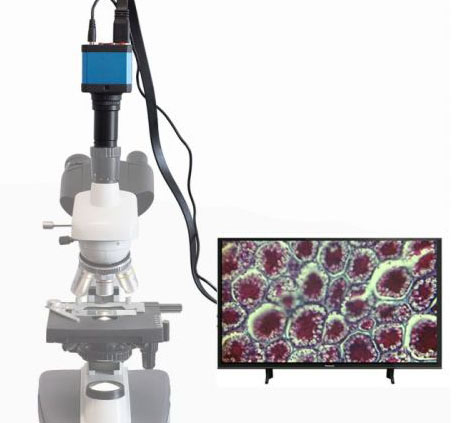What Are Microscope Camera TV Lines? Your Buying Guide
When shopping for a microscope camera, you’ll encounter a key specification: TV Lines (TVL). You might see a value like 1800TV Lines and wonder what it means. Unlike the more familiar “megapixels,” TV Lines are a more direct measure of a camera’s ability to resolve fine detail.
In this guide, we break down what TV Lines are and how to use them as a practical buying reference.
What Are TV Lines (TVL) and Why Do They Matter?
TV Lines are a measure of a camera’s limiting resolution. Originating from broadcast standards, this metric indicates how many distinct alternating black and white lines a camera can resolve vertically in the picture height.
A specification like 1800TV Lines means the camera has a high resolving power, allowing it to capture exceptionally fine details. In microscopy, this translates to clearer, sharper images where you can distinguish subtle structures in cells, tissues, or materials that a lower-resolution camera would blur together.
TV Lines vs. Megapixels: A Critical Difference
This is the most common point of confusion. They are related but measure different things:
Megapixels measure the quantity of pixels on the sensor. It defines the potential size and amount of information in the image—the size of the canvas.
TV Lines measure the quality and sharpness of the final image produced by the entire system (sensor, lens, and processing). It defines how finely you can paint on that canvas.
A high-megapixel camera with poor optics and processing will have low TV Lines and produce soft, disappointing images. A camera with slightly fewer megapixels but high TV Lines will often deliver a superior, more detailed image.
How to Use TV Lines as a Buying Guide (Practical Reference)
Use the following TV Lines ranges to guide your purchasing decision based on your application and needs.
1. Entry-Level (< 800 TVL)
Applications: Basic educational demonstration (e.g., in schools), simple visual inspection where detail is not critical.
Buying Advice: Suitable for the tightest budgets. Generally not recommended for any professional or research use.
2. Mainstream / General Purpose (800 – 1200 TVL)
Applications: University teaching labs, routine industrial QC (e.g., PCB inspection, low-magnification metallurgy), basic medical analysis.
Buying Advice: This is the sweet spot for most common applications. It provides excellent value and full HD (1080p) quality for the price.
3. High-Performance / Research Grade (1300 – 1800+ TVL)
Applications: Life science research (e.g., fluorescence imaging), advanced material science, precise measurement, and pathology.
Buying Advice: 1800TVL is a key benchmark for a high-quality research camera. At this level, TV Lines are a more important indicator of performance than megapixels alone. Always request and compare sample images from different cameras.
4. Top-Tier / Ultra-High Resolution (2000+ TVL)
Applications: Whole-slide scanning (WSI), cutting-edge research requiring maximum detail.
Buying Advice: These are premium, scientific-grade cameras. The entire imaging chain, including microscope objectives, must be of the highest quality to match the camera’s capability.
Final Checklist for Buyers
- Define Your Need: Are you teaching, doing QC, or conducting research?
- Set Your TVL Range: Use the guide above to narrow your focus.
- Compare Images: The most reliable step—ask vendors for sample images of your specific type of sample.
- Consider the Sensor: A larger sensor size often provides better low-light performance and image quality.
By understanding TV Lines, you can look beyond marketing claims and choose a microscope camera that truly delivers the clarity and detail your work requires.

